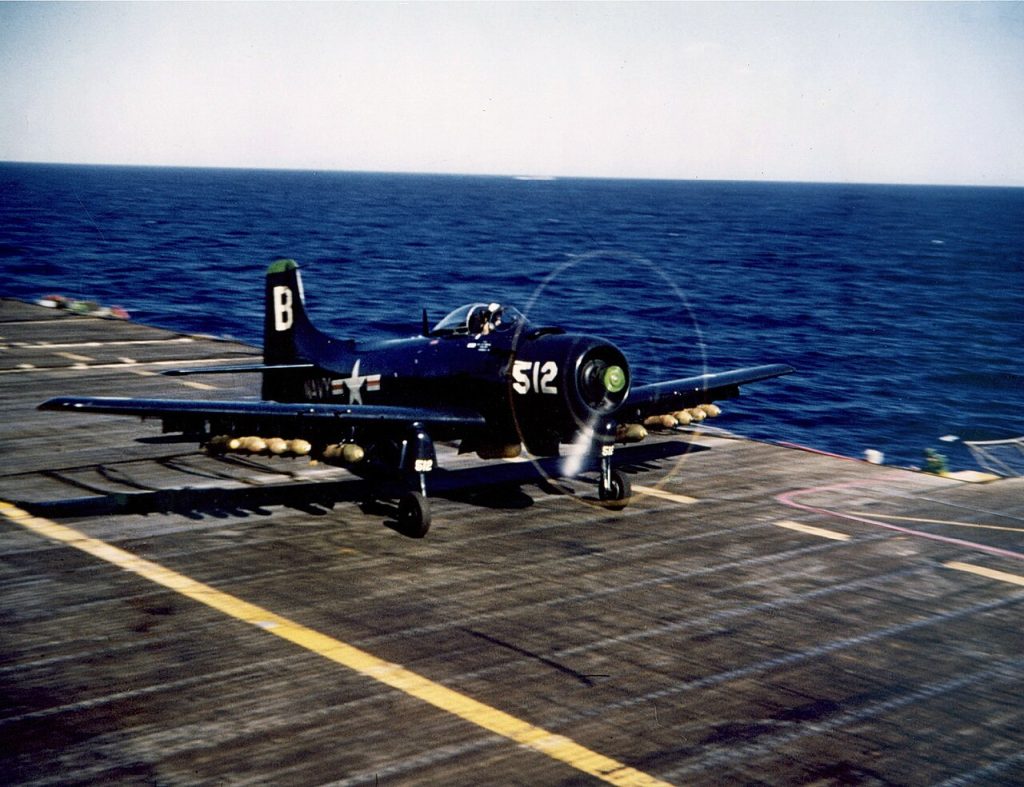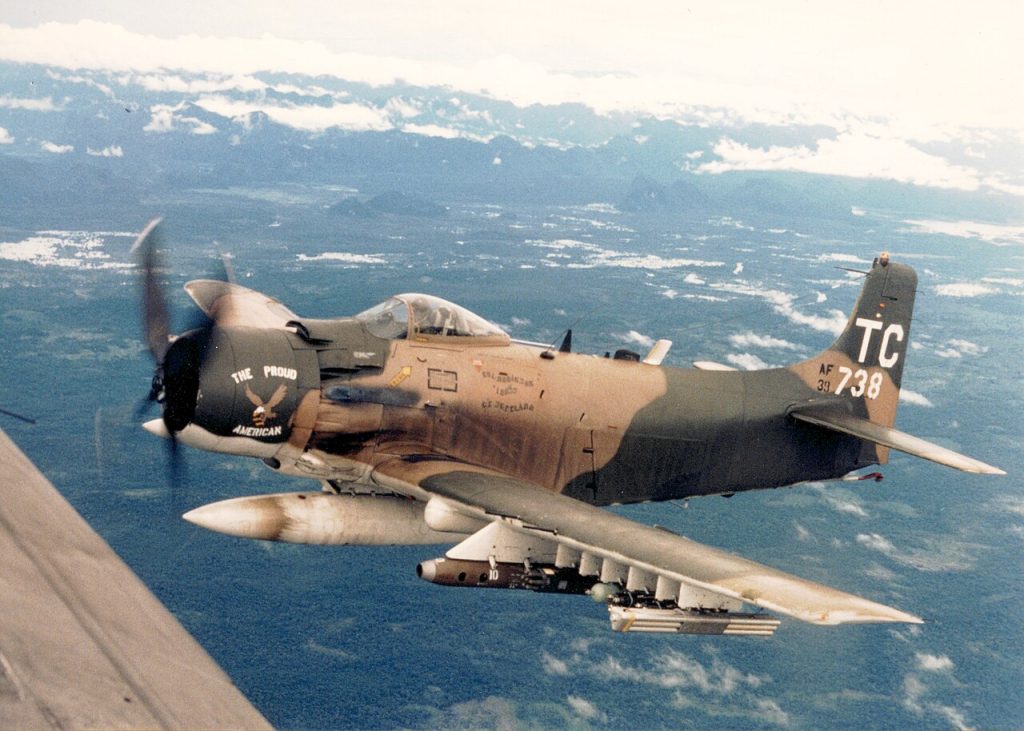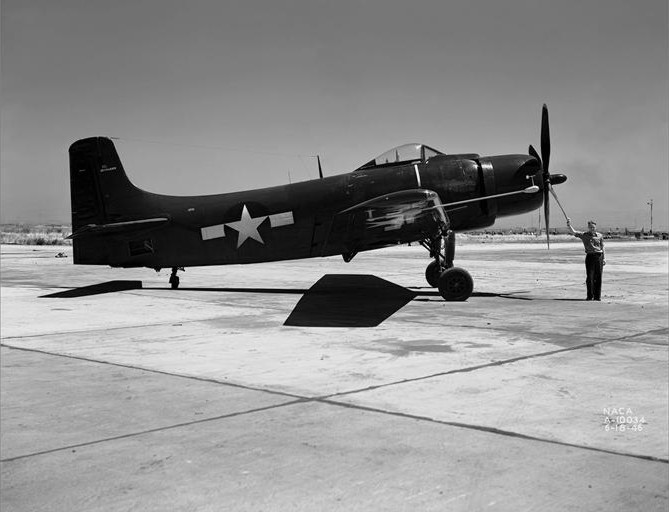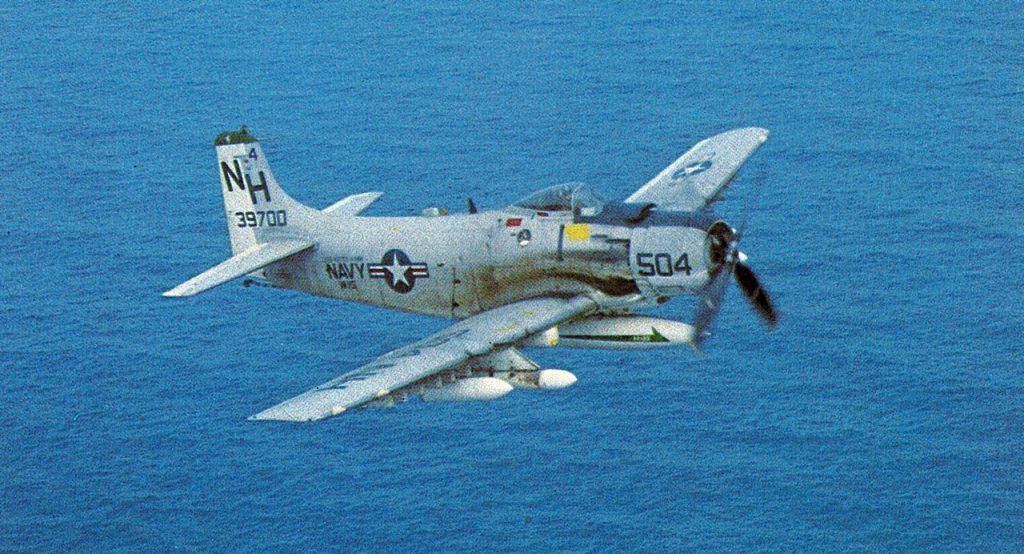On a crisp spring day in 1945, history took flight. In Los Angeles’ Mines Field, the Douglas XBT2D-1 roared into the sky, christening the era of the iconic AD-1, later known as the A-1 Skyraider. This wasn’t just another aircraft; it was a revolution, born from a shift in naval thinking.
The early 1940s saw the Navy Bureau of Aeronautics (BuAer) envisioning a single multi-talented aircraft to replace dedicated dive bombers and torpedo bombers. Enter the XBT2D-1, designed to juggle both roles and free up carrier space for more fighters. But Douglas Aircraft, led by the visionary Ed Heinemann, had bigger dreams. He saw the limitations of the initial BTD-1 design and, in a daring move, convinced BuAer to scrap it and trust him with a new prototype—in just one month.
Heinemann didn’t disappoint. The next day, his team presented a radically different design. Powered by a mighty Wright R-3350 Duplex Cyclone engine, the low-wing taildragger boasted straight wings laden with 15 ordnance stations, a bubble canopy, and formidable 20mm cannons. BuAer was smitten. Despite having only nine months to build 25 pre-production models, Douglas delivered flawlessly. The prototype soared effortlessly, leaving competitors in the dust.

The Skyraider, as it was later named, wasn’t just powerful; it was adaptable. While the initial order of 548 was trimmed to 277 due to the war’s end, its potential was undeniable. Soon, it proved its mettle in carrier suitability trials, earning operational status by late 1946. But BuAer craved even more versatility. The final 35 AD-1s were configured for electronic countermeasures, marking the beginning of the Skyraider’s legendary transformation.
Over its 12-year production run, over 3,180 Skyraiders took flight, evolving through seven basic versions and 28 variants. Each iteration reflected advancements in technology, with engine horsepower, electronics, and armaments constantly improving.
But the Skyraider’s true strength lay in its adaptability. The basic airframe was a chameleon, morphing into airborne early warning platforms, night attack specialists, and even anti-submarine warfare heroes. This versatility earned it the affectionate nickname “Able Dog” from pilots and maintainers, a testament to its ease of operation, toughness, and low maintenance needs.

Even today, the sight of a Skyraider gracing the skies stirs emotions. Several remain in civilian hands, a living reminder of this remarkable aircraft’s legacy. The Skyraider wasn’t just a warbird; it was a testament to innovation, adaptability, and the unwavering spirit of those who dared to dream, design, and fly this aviation legend.



